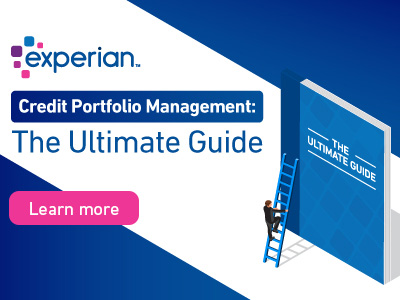In this episode of Experian Business Chat, I sit down with Sr. Product Manager Thy Phan to discuss the portfolio risk challenges faced by risk managers during uncertain economic times and how Experian’s Ascend Commercial Suite can help them. Ascend offers clients a comprehensive view of data, historical trends, and industry insights, enabling them to make informed decisions about credit policies and strategies. With the platform’s data-agnostic approach, clients can better target their marketing efforts, identify growth opportunities, and adapt their product offerings to suit the changing economic landscape.
What follows is a lightly edited transcript of our interview.
Gary Stockton: Well, hello, and welcome to Experian Business Chat, where we talk about commercial risk and how Experian data and analytics solutions solve a variety of problems. I’m Gary Stockton, and today I’m here with Thy Phan, Product Manager in Business Information Services, for our Ascend solutions.
Can you talk about the challenges you are seeing for risk managers in the economy?
Thy Phan: Yeah, absolutely, Gary. So with the clients that we’ve mainly been working with, three common challenges come to mind when we talk about challenges that credit managers face. The first is data, the ability to obtain data, and the ability to link data. There are first-party data sets in-house, which can be dispersed across different platforms and different environments. So it’s difficult for them to extract the data and pull it out in an environment where they can then link it all together. Secondly, our clients rely on many different data partners, such as Experian, for credit and other alternative data. So the challenge that the client’s face is doing all the prep work to process the data in a way that they can start analyzing and looking at the data. And it’s difficult for them to really link the data sets together to get a more comprehensive view of their customer.
The second challenge that we often see is the lack of analytical environments or software and tools that their teams can use to develop models, for example, run analytics quickly and then deploy into production. For those clients that actually do have those tools and platforms available, the resources are very limited. So often, what we see is they’re fighting for resources across different projects, which makes it difficult or slow to roll out new things.
And then, thirdly, the reporting aspect of it. It’s difficult for clients to produce reports on a regular cadence that can inform business decisions on the fly, on demand. So those are the three main challenges that we often see with our clients today.
What does Experian have to help manage these challenges, and how can clients use data to understand what their next step is during a recession?
Thy Phan: Here at Experian, we have a product suite called the Ascend Commercial Suite. It is an analytical platform that is cloud-based and Experian hosted. The value for the client is that Experian provides all of the data upfront. So all of our historical credit data, alternative data, we prep and load all the data into the platform ahead of time for the client. The platform is also data-agnostic, which means that we can load any data set onto the platform for the client, including first and other third-party data. Experian would do the heavy lifting to match and link all of the data for the client, so they can leverage Experian’s premier linking logic, and matching logic to get a comprehensive view, a consistent view across the board, and everything prepped and ready to go. All they have to do is log into the environment, and they can start their work.
Also, there’s a reporting capability as part of the platform. So they can pull reports anytime anybody can go in there, pull a report, and be able to get those insights in terms of the trends and shifts, and it has a co-authoring capability. So more than one resource can go in and work on the same project at the same time, so it can be dispersed across the business and shared so that things can be done on a more regular cadence and at a quicker pace.
How can Ascend help risk managers be more confident in their credit policies when times are uncertain?
Thy Phan: There are three ways that Ascend really helps. Because all of the data is in there and clients are getting a very consistent and comprehensive view of the different data sets of their customers, several insights can be observed. The first one is different risk factors. Are there different risk factors that really impact their portfolio?
Gary Stockton: Wow, that’s incredibly powerful. And particularly for risk managers who are probably right now trying to figure out if they’re in a good position if they’re strong enough, and if they’ve got the right level of risk in their portfolio.
Thy Phan: Absolutely. And one other thing that I will mention that’s very powerful is the fact that they can start predicting where the economy is going to be based on some of the industry trends; for example, if we’re looking at late-stage delinquencies, maybe those delinquencies haven’t shown up in their portfolio yet, but because they have the industry view, they can see that maybe late-stage delinquencies are starting to pick up in the industry. And so they can get a view of the changes in the macroeconomic situations potentially that they may not be able to see just by looking at their portfolio.

Thy Phan, Experian
If we’re looking at late-stage delinquencies, maybe those delinquencies haven’t shown up in their portfolio yet, but because they have the industry view, they can see that maybe late-stage delinquencies are starting to pick up in the industry.
Can you tell us what you are seeing as far as new capabilities and strategies that are leading to success for our clients?
Thy Phan: Yes. The first example is at the top of the funnel. You have to be able to do more with less, especially when the economy turns and budgets are going to be tightened. So some of the strategies that our clients are deploying are having the data available, they can load in their performance data, and identifying profiles of their ideal customers, not only from a marketing perspective but also from a credit perspective with a limited budget. They don’t want to market to just everybody; they want to market to customers that are more likely to buy and more likely to qualify.
Secondly, the ability to see growth opportunities, like white space analysis or market penetration. Are their customers mainly located in a specific geography or particular industry? Are there opportunities to grow outside of those core areas? With the economy shifting, it’s critical for clients to find more revenue streams elsewhere.
And thirdly, potential shifts in product offerings. For example, maybe previously, when the economy was doing well, one product may have made sense and been more valuable to customers, and now with the potential shift, the client may need to shift to a different product or a different go-to-market strategy. The data can help inform some of that decision-making.
Gary Stockton: Well, Thy, thank you for sharing your perspectives and insights with us. If you would like to learn more about Ascend, we invite you to watch our benchmarking demo, where analytics consultant Emily Garrett shares use cases found in Experian’s Commercial Ascend Benchmarking Dashboard.
